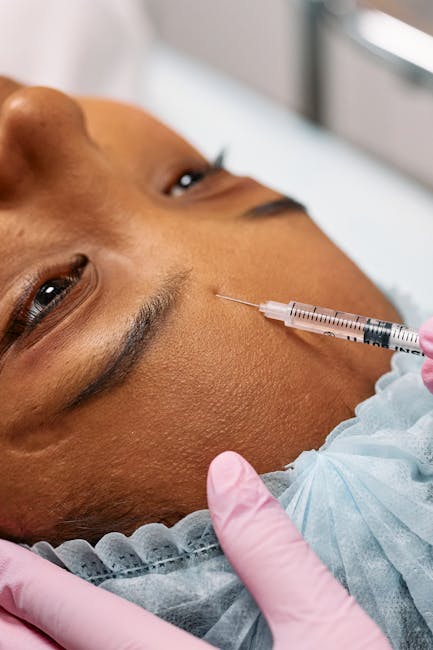Botox Treatment for Overactive Bladder: How It Works
In the realm of medical treatments, Botox has long been known for its cosmetic applications, but did you know that it also offers relief for individuals suffering from an overactive bladder (OAB)? This condition affects millions worldwide, causing frequent urges to urinate and sometimes urine leakage. In this comprehensive guide, we will delve into how Botox treatment for overactive bladder works, its benefits, potential risks, and what you can expect from the procedure.
Understanding Overactive Bladder
The term overactive bladder (OAB) refers to a set of urinary symptoms, most notably including the sudden urge to urinate, which can be difficult to control. According to the American Urological Association, approximately 33 million people in the United States alone are affected by OAB. The condition can significantly impact quality of life, causing embarrassment, anxiety, and social withdrawal.
Symptoms of Overactive Bladder
OAB is characterized by the following symptoms:
- Urgency: A sudden and strong need to urinate immediately
- Frequency: Urinating more than eight times in a 24-hour period
- Nocturia: Waking up more than once at night to urinate
- Urge Incontinence: Involuntary leakage of urine following a strong urge to urinate
What is Botox and How Does it Help?
Botox, or botulinum toxin, is a neurotoxic protein that, when used in small, controlled amounts, can relax muscles. While most people associate Botox with smoothing facial wrinkles, it has been approved for various medical uses, including the treatment of muscle spasms and excessive sweating.
Mechanism of Botox in OAB Treatment
In the context of OAB, Botox works by relaxing the bladder muscle, which can help reduce the symptoms of urgency, frequency, and urge incontinence. It is administered through injections directly into the bladder wall, where it blocks the release of acetylcholine, a neurotransmitter that signals muscle contraction. This results in a more relaxed bladder and improved urinary control.
The Botox Treatment Procedure
Receiving Botox treatment for overactive bladder is generally a straightforward procedure, but it does require a skilled healthcare professional. Here’s what you can expect:
Pre-Treatment Preparation
Before the procedure, your doctor may perform various tests to ensure you are a suitable candidate for Botox treatment. These tests can include urodynamic studies to assess bladder function. Discuss any medications you’re taking, as some may need to be paused before the treatment.
The Injection Process
The procedure is typically performed in a doctor’s office or outpatient facility. Here are the steps involved:
- Anesthesia: Local anesthesia is typically used to numb the bladder.
- Cystoscopy: A thin tube with a camera, called a cystoscope, is inserted through the urethra to allow the doctor to view the bladder.
- Injections: Botox is injected into various sites on the bladder wall using a fine needle. The entire process takes about 10 to 30 minutes.
Post-Treatment Care
After the procedure, you might experience minor discomfort, but most patients can return to normal activities within a day. It’s crucial to stay hydrated and follow any specific post-care instructions provided by your healthcare provider.
Benefits of Botox for Overactive Bladder
The primary benefit of Botox treatment is the significant reduction in OAB symptoms, which can greatly enhance quality of life. According to a study published in the Journal of Urology, patients who received Botox reported an average reduction of 50% or more in urinary incontinence episodes.
Long-term Relief
Botox can provide relief from OAB symptoms for up to six months, after which the procedure can be repeated. This makes it a viable long-term management strategy for many patients, especially those who do not respond well to oral medications.
Improved Quality of Life
Patients often report significant improvements in their daily lives, including better sleep quality due to reduced nocturia, increased confidence, and the ability to engage in social activities without fear of accidents.
Potential Risks and Side Effects
As with any medical procedure, Botox treatment for OAB comes with potential risks and side effects. Understanding these can help patients make informed decisions about their treatment options.
Common Side Effects
Some patients may experience side effects such as:
- Urinary tract infections (UTIs)
- Difficulty urinating, which might require the temporary use of a catheter
- Blood in the urine post-procedure
Rare but Serious Risks
Although rare, some serious risks include:
- Allergic reactions to Botox
- Worsening of urinary symptoms
- Spread of the toxin to other parts of the body
Is Botox Right for You?
Botox treatment for overactive bladder is typically recommended for individuals who have not responded well to other treatments, such as lifestyle changes and oral medications. It’s essential to consult with a healthcare provider to discuss your symptoms and treatment history.
Considerations Before Choosing Botox
Discuss the following with your doctor:
- Your complete medical history
- Any allergies, especially to botulinum toxin
- Previous treatments and their outcomes
Conclusion
Botox treatment offers a promising solution for those struggling with the debilitating symptoms of overactive bladder. By understanding how the treatment works, the procedure involved, and the potential risks, patients can make informed decisions and potentially improve their quality of life. If you believe Botox might be the right option for you, consult with a healthcare provider to explore this treatment further.
For more information on overactive bladder treatments, visit the Urology Care Foundation website.

